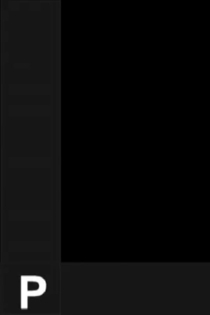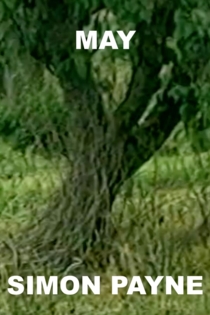
Simon Payne
2021Twice Over
Simon Payne
"In Twice Over Simon Payne, has filmed off the screen, with a hand held camcorder, an original sequence of digitally generated coloured rectangles. The re-filmed layer and an original variation of it are then superimposed on themselves, so that the discrepancies between them generate a third element: differently coloured slender rectangles that judder between the main blocks of colour . In contrast to the many computer-generated works Payne has made over the last eight or so years, the texture and ‘noise’ of the analogue decay generated by re-filming (as opposed to digital copying) plays an important role." (Nicky Hamlyn)
Twice Over
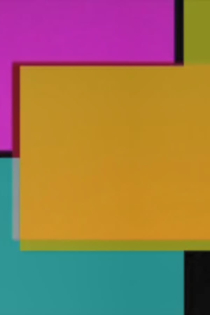
Colour Bars
Simon Payne
The colour bars ordinarily form a constant test signal image that is used to calibrate video equipment. Here the configuration of the seven vertical stripes continually shifts. The rapid pace with which the piece cuts produces different kinds of colour mixing, and in the video's flickering the phased fields of stripes appear to dart in all sorts of directions.
Colour Bars
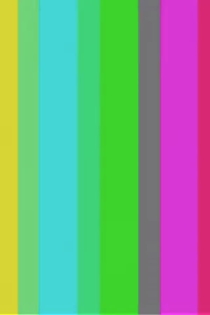
New Ratio
Simon Payne
The colour fields that comprise New Ratio involve a tense relationship with the edge of the screen. The piece explores the move from the 4:3 screen ratio to 16:9, which is now effectively the standard for broadcast television and video. In the construction of New Ratio each colour was assigned a particular tone: white was attributed a standard 1KHz test tone; the pitch of the tone attributed to blue was half that of the test tone; and each of the colours in between (in descending order of luminance) were attributed tones at intervals between these values.
New Ratio

Thirds
Simon Payne
This piece developed from concerns that grew out of Colour Bars. The two projectors are aligned so that they overlap by a third, defining an expanded frame that approaches wide-screen proportions. Each projector shows a cycle of primary and secondary colours. A third set of colours appears in the overlap of the two projectors, and as the pace of each cycle increases there's an additional form of colour mixing. The size of the frame that each projector displays grows narrower as the piece progresses, making for illusions of circling and weaving movement.
Thirds

Intersections
Simon Payne
The score for Intersections is comprised of twelve linear figures, each with six points, set out across a conventional stave. Accompanying instructions suggest a range of ways in which the musicians might get from one point to the next. For the purposes of the film, the musicians were recorded playing the piece from several cameras located at positions suggested by the angles/lines in the score. Several iterations of the video were explored before settling on this final version, which cuts between different combinations of material shot from six positions.
Intersections

Set Theory I-IV
Simon Payne
Aspects of this piece are related to some of the basic terms used in the branch of mathematics called Set Theory, e.g.: ‘union’, ‘intersection’, ‘difference’, ‘complement’, the ’empty set’, the ‘universal set’, ‘elements’, ‘subsets’, ‘operations’ and ‘groups’. In the first instance the piece involved producing and collating different sets of vertical, horizontal, diagonal, and curved graphic transitions. These were subsequently combined or sequenced by way of different rules that keep the conflict of planes, forms, tonal values and colour foremost.
Set Theory I-IV
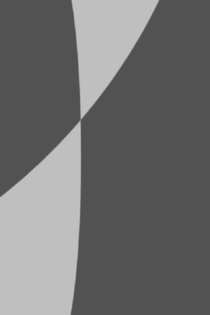
Vertical Composition
Simon Payne
A vertical feature bisects the frame in each of the shots in this video. At moments it seems to be the edge of a wooden window frame; sometimes it looks more like an abstract painterly stripe; occasionally it splits, divides and almost disappears.
Vertical Composition
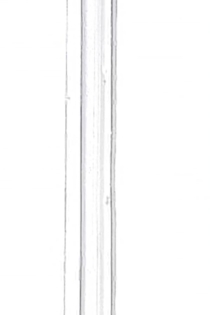
Iris Out
Simon Payne
Iris Out is composed of single frames from sequences of expanding or contracting circles, reformatted for different aspect ratios. In certain passages of the video, the combination of circles and ellipses resembles an eye, returning the gaze of the spectator. In the middle of the piece there are rows that incorporate nine contrasting sequences comprising six different colours and tones in alternating combinations. Besides the physical impact of this piece, I am primarily interested in the relation between the edges of planes/shapes and the confines of the screen. What’s fascinating to me is the way in which the colour fields are reproduced by the eye and brain, affecting consciousness and perception. - Simon Payne
Iris Out
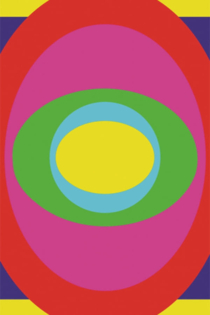
Black and White
Simon Payne
In Black & White there are two types of imagery: video footage of surfaces and spaces such as walls and doorways, and static computer-generated graphics. There are points when the origin of the material that you see seems clear, but a change in focus or a cut to another perspective often throws the image into doubt. In many ways the piece is a minimalist investigation of assumptions regarding the aesthetics of virtual reality.
Black and White
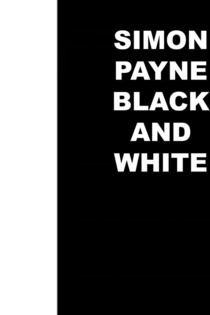
Reason's Code
Simon Payne
A short section from Man Ray’s film Return to Reason (1923) used anew as a graphic score. Various critics and historians see this section of Return to Reason as a redacted poem or telegram, akin to Man Ray’s ‘dumb’ poetry. Either way, its negative aesthetics have signalled new potential.
Reason's Code

Double Negative
Simon Payne
Double Negative offers a reflexive take on the rather spurious effect of 'video negative'. The piece was made by re-videoing the live output from the camera as it was displayed on a monitor, creating feedback. In using the negative video effect, a flicker of alternating positive and negative imagery is produced and various fluctuating microtonal elements in the picture plane are revealed.
Double Negative
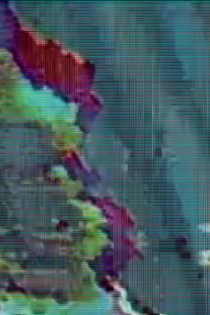
Cut Out
Simon Payne
Cut Out is a largely hand-made piece involving different coloured cards with apertures cut out of them, which have been superimposed in combinations starting from opposite ends of a simple spectrum (from yellow to blue). At the same time, the method of superimposition is more complicated than it might at first seem, adding to the instability of the various planes, edges and colours.
Cut Out
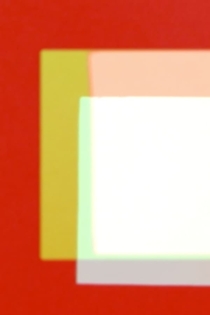
NOT AND OR
Simon Payne
NOT AND OR involves black and white quadrilaterals spinning in virtual space that alternate with the same static shapes re-filmed from a screen in real space. The second half of the piece is the same as the first, but flipped, reversed and re-filmed again, through successive generations - adding while taking away.
NOT AND OR
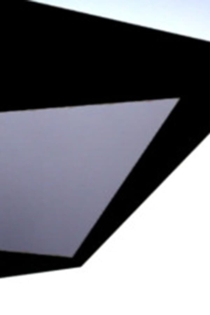
Vice Versa Et Cetera
Simon Payne
Ten variations of four transitions transform the screen from one field of clashing complementary colours to another, via radiating, sweeping and twisting graphic dividing lines. The course of these transitions is interrupted from the offset and becomes increasingly frenetic, especially as the spectrum turns to black and white.
Vice Versa Et Cetera
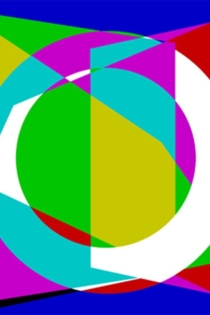
Point Line Plane
Simon Payne
Shifting grids in black, white and shades of grey plot and continuously re-frame screen space. The increasingly complex matrix of layers produces an illusion of depth, beyond the surface of the screen, but with positive and negative switching, the piece also illuminates the viewer
Point Line Plane
